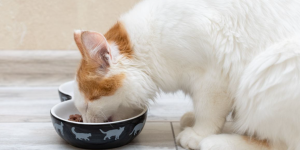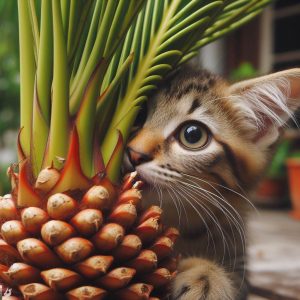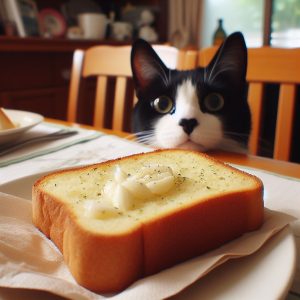Is your cat giving you the cold shoulder when it comes to their usual dry food? Cats can be notoriously picky eaters. If your furry friend seems bored with their kibble, how to soften dry cat food can make it more enticing. With a few simple tricks, you can transform those crunchy bits into a mouthwatering meal your cat will gobble up.
Introducing soaked or warmed-up dry food into your cat’s diet can also help if they have dental issues that make hard kibble difficult to chew. And adding a bit of moisture can be beneficial for cats who don’t drink enough water.
This comprehensive guide covers everything you need to know about softening up dry cat food. You’ll learn:
- The benefits of softening dry cat food
- Step-by-step instructions for different softening methods
- Tips for transitioning your cat to softer food
- Storage instructions to keep it fresh
- Recommendations for kitties with special needs
Follow these tips from veterinarians and feline experts, and your stubborn kitty will be enjoying their food in no time. With a few simple tricks, you can turn those crunchy bits into a mouthwatering mealtime they’ll look forward to each day.
The Benefits of Softening Dry Cat Food
Before getting into how to soften up kibble, let’s look at why it can be beneficial for your cat’s health and happiness. Here are some of the main advantages of adding moisture to dry food:
Improves hydration: Cats have a low thirst drive, so they don’t always drink enough water on their own. Adding water or broth to their food increases their fluid intake. This helps prevent urinary tract problems like crystals and infections.
Easier to chew: For cats with dental issues or missing teeth, hard kibble can be painful and difficult to bite and chew. Softening it makes eating less painful for cats with sore mouths.
More aroma: Warming or soaking food releases tasty aroma compounds, making it more enticing to finicky felines. It’s like warming up leftovers to make them smell appealing again.
Supports kidney health: Wet food has higher moisture content, which supports kidney function and urinary tract health. This is especially important for senior cats prone to kidney disease.
Adds variety: Simple changes like warming keep their diet interesting for picky eaters who get bored of the same old dry food day after day.
Promotes weight loss: Wet food is lower in carbohydrates and more nutrient-dense than kibble. This helps cats feel full with smaller portions, aiding weight loss.
The main downside of softening dry food is that it can’t be left out as long before spoiling. Bacteria multiply faster as soon as water is added. But proper refrigeration and storage allows softened food to keep for 2-3 days.
Follow these instructions to soften food while minimizing any food safety risks. Your cat will get all the benefits of increased moisture and flavor without the hassle or waste!
How to Soften Dry Cat Food
There are a few different ways to moisten and soften that boring old dry kibble to make it delicious again. Here are step-by-step instructions for each method:
Method 1: Add Warm Water
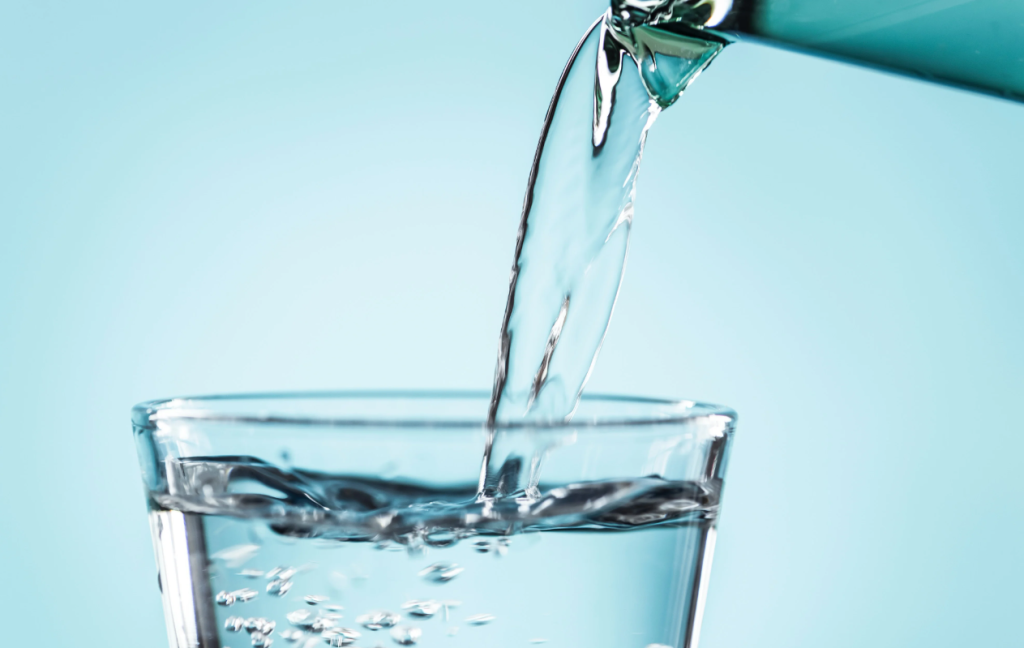
Adding warm water is quick and easy. It releases aroma, making the food more enticing. Here’s how to do it:
- Scoop out the proper portion of dry food into your cat’s bowl. Remove about 1/4 cup to allow for the added volume of water.
- Boil water in a tea kettle or pot. Allow it to cool for 1-2 minutes so it’s no longer at a boiling temperature.
- Pour the warm water over the kibble. Use about 1-2 tablespoons per 3-4 tablespoons of dry food.
- Stir well so all the kibble is evenly moistened.
- Allow to sit for 2-3 minutes for the kibble to fully soak up the liquid. Fluff it with a fork and serve.
- Refrigerate any leftovers within an hour and use within 3 days.
The key is to use hot – but not boiling – water. This brings out the aroma and makes it irresistible. But water that’s too hot can damage nutrients. Letting it sit briefly helps the kibble fully absorb the moisture.
Method 2: Microwave Plain Water
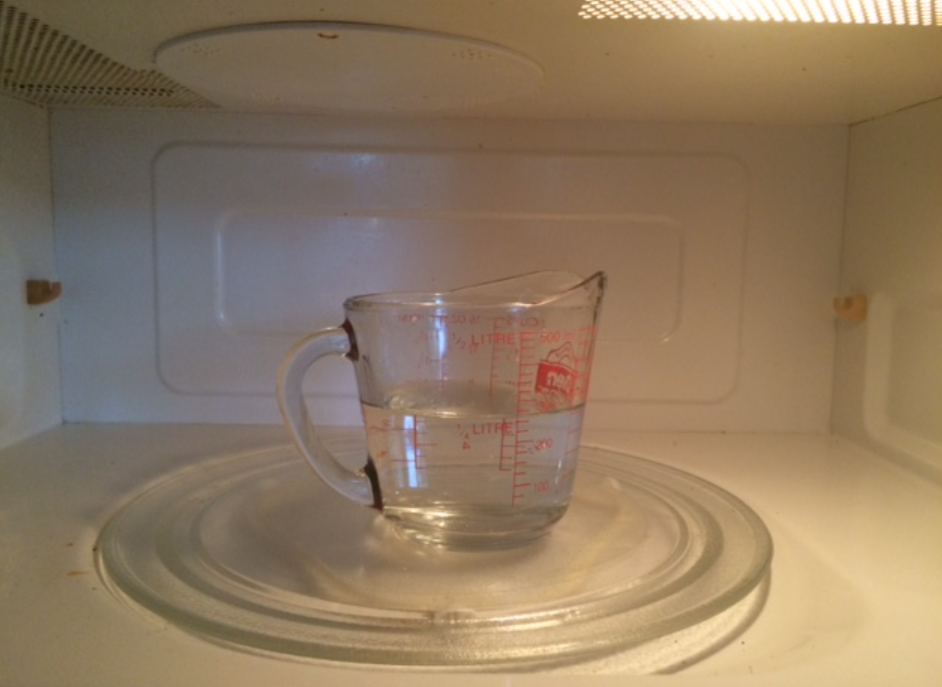
The microwave offers an alternative for quickly heating up water. Follow these steps:
- Measure out the dry portion, removing about 1/4 cup.
- In a microwave-safe bowl or measuring cup, heat plain water for 20-30 seconds until hot but not boiling.
- Pour the water over the dry food, using a 1:2 water to food ratio.
- Stir well, allow to sit briefly, fluff with a fork, and serve.
- Refrigerate within 1 hour and use within 3 days.
Microwaving is faster than boiling water on the stove. Just be careful not to heat it too long, which can deplete the water of oxygen. Allowing it to sit and soak in primes that dry kibble to reach its tender, aromatic potential.
Method 3: Microwave Wet Food
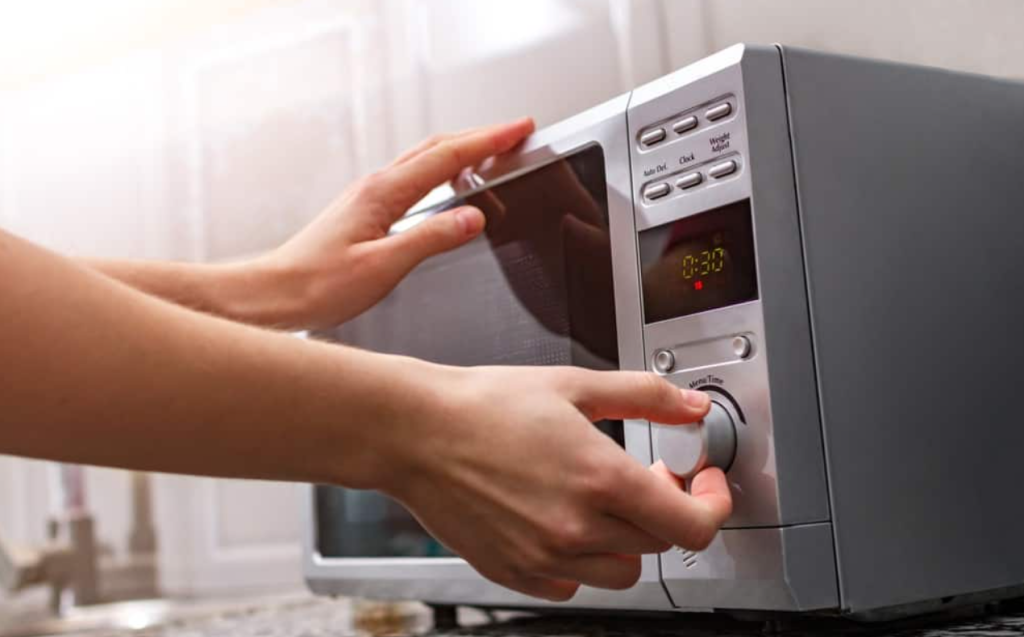
For an extra moisture and flavor boost, microwave a small amount of wet or canned food instead of water. Here’s how:
- Scoop out the dry portion, removing about 1/4 cup.
- In a microwave-safe bowl, add 2-3 tablespoons of wet food per 1/4 cup of dry food.
- Microwave the wet food for 10-15 seconds until warm but not hot.
- Add the heated wet food to the dry kibble. Stir to evenly coat the pieces.
- Allow to sit briefly before serving to your cat.
- Refrigerate leftovers within 1 hour and use within 3 days.
The warm wet food releases even more enticing aromas. It evenly coats the dry bits to provide a flavorful mixed texture.
Method 4: Soak in Broth
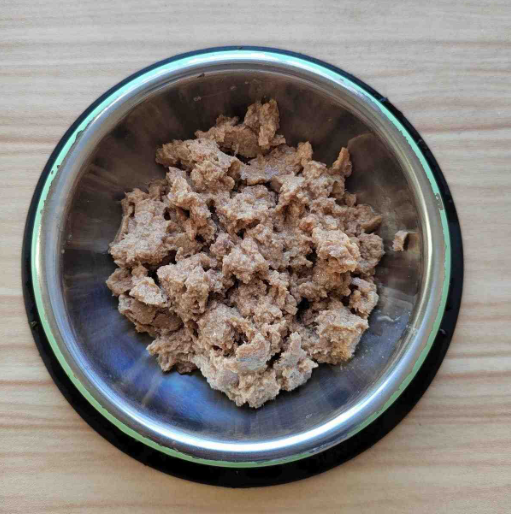
For a savory soak, try using low-sodium chicken, vegetable, or beef broth instead of plain water. Try this technique:
- Scoop out the dry food, removing about 1/4 cup.
- Warm the broth in a saucepan, microwave, or electric kettle until hot but not boiling.
- Pour the broth over the kibble using a 1:2 fluid to food ratio.
- Stir well, let sit, and fluff with a fork before serving.
- Refrigerate leftovers within 1 hour and use within 3 days.
The savory broth infuses tons of aroma and moisture into the kibble. It creates a scrumptious gravy-like coating your cat will love.
Tip: Opt for low-sodium broth and limit use to occasional treats. Too much sodium isn’t healthy for everyday meals.
Method 5: Automatic Pet Food Dispenser
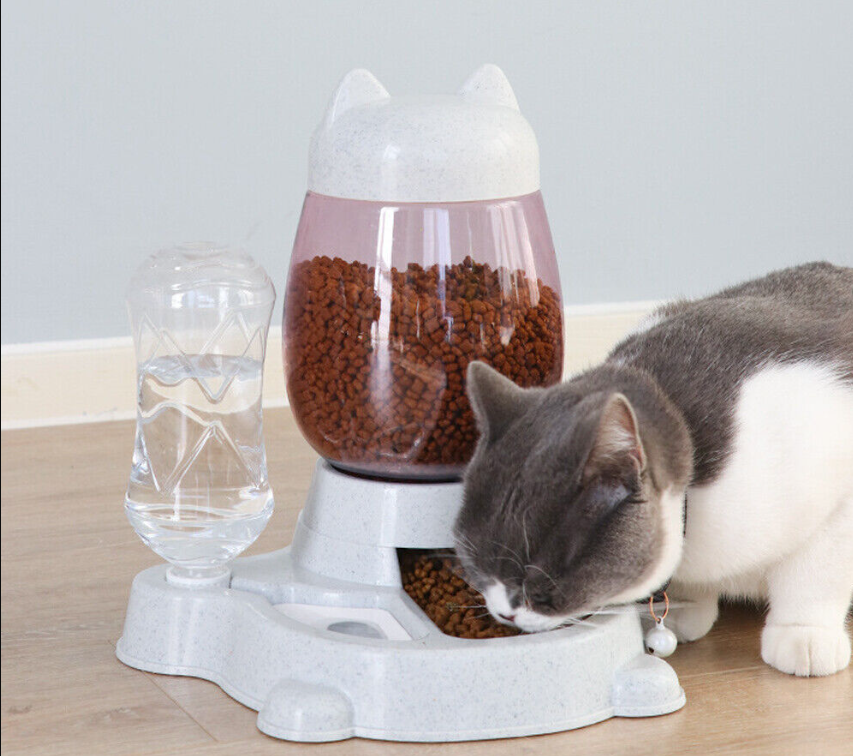
High-tech pet food dispensers add water automatically over time. Here’s how they work:
- Load dry food into the dispenser hopper.
- Fill the water reservoir.
- Set the dispenser for the desired number of meals.
- It will deposit small amounts of dry food into the bowl.
- Before each mealtime, a water nozzle soaks the food.
These dispensers slowly mix food and water for a moist meal ready on schedule. They’re ideal for multi-cat homes to control portions. But they can be an expensive investment.
Transitioning Your Cat to Softer Food
To help your cat get used to softer food, make the change gradually if they’re used to only dry:
- Start by adding just 1-2 teaspoons of water to their usual serving of dry food.
- Slowly increase the moisture amount over 1-2 weeks.
- If needed, heat the water to increase aroma and temptation.
- Mix the new softened food in with their dry kibble, then gradually increase the ratio of softened to dry.
- Pay attention to ensure your cat is eating all of the softened portion. If not, slow the transition.
- Try different proteins, broths, or wet foods to find flavors they love.
- Be patient! It can take cats weeks to accept new food textures.
Go slowly, and offer praise and affection when they try the new texture. This positive reinforcement can help them develop a taste for it.
Keeping Softened Cat Food Fresh
To keep softened dry food safe:
- Discard any uneaten portion after 15-20 minutes. Bacteria multiply quickly on moistened kibble.
- For next meals, only prepare as much as your cat will eat per sitting.
- Refrigerate any leftovers immediately, and use within 3 days. Discard after that.
- When reheating, microwave until warm, not hot. Reheating can further deplete nutrients.
- Don’t leave reconstituted food in your cat’s bowl all day. Feed set meals instead.
- Rinse water and food bowls thoroughly after each use.
Follow these precautions, and softened dry food can be a healthy, tempting treat. The key is limiting bacterial growth with proper storage and handling.
Softening Dry Food for Cats with Special Needs
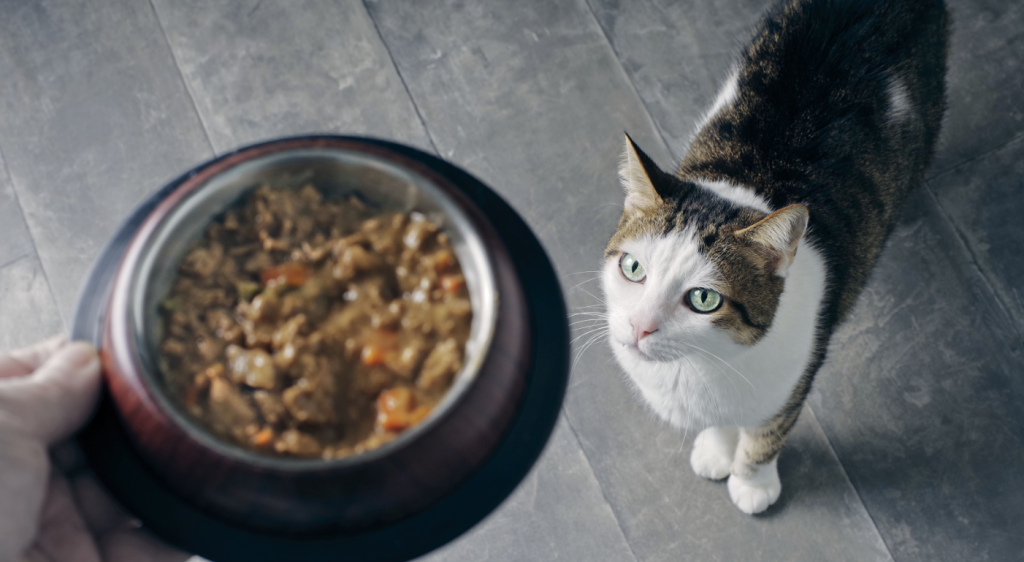
Cats with certain health conditions may especially benefit from softened dry food. Check with your veterinarian, but here are some tips:
For Senior Cats:
- Soaking dry food in warm broth makes it aromatic and easier to chew and digest.
For Kittens:
- Adding warm water or microwave-heated wet food helps transition kittens from nursing to solid foods.
For Dehydrated Cats:
- Adding broth or wet food to their meals provides extra fluids. Supplement with chicken, vegetable, or bone broths between meals too.
For Obese Cats:
- Replace 1/4 of the calories from dry food with warmed wet food to reduce overall portions. The moisture helps them feel full.
For Dental Issues:
- Microwaved wet food or soaked kibble is gentler on sore teeth and gums.
Check with your vet before significantly changing your cat’s diet. But the above adjustments can provide nutrition they can enjoy.
The Ideal Food Texture for Your Cat
There’s no one-size-fits-all approach when it comes to the perfect food texture for cats. Consider these factors:
- Age: Kittens and seniors often prefer softer foods they can digest easily.
- Breed: Some breeds like Maine Coons tend to have a fondness for and ability to crunch dry food.
- Dental health: Cats with few teeth remaining need softer foods. Check with your vet.
- Personal preference: Monitor if your cat seems to enjoy dry, wet, or a mix. Let their preferences guide your choices.
- Hydration needs: Does your cat drink enough water? Adding moisture to their meals helps ensure proper fluid intake.
Aim for a balance of textures to keep your cat interested in eating. Pay attention to any difficulty chewing or disinterest, which are signs it may be time to soften things up.
FAQs About Softening Dry Cat Food
Here are answers to some commonly asked questions about moistening dry kibble:
How long can soaked dry cat food sit out?
Only 1-2 hours. To avoid bacterial overgrowth, refrigerate any leftovers immediately and throw away any uneaten portion after 15-20 minutes.
Is it safe to add milk or cream to cat food?
No, dairy is unsafe for cats and can cause digestive upset. Opt for low-sodium broths or plain water instead.
Can I use the microwave to warm wet cat food?
Yes, you can microwave it for 10-15 seconds to release aroma. But monitor closely and stir afterward, as microwaves can create hot spots.
Is softened food okay for diabetic cats?
Yes, as long as the food is moisture-rich and low in carbs, it can benefit diabetic felines. But get your vet’s approval first.
What temperature of water should be used?
Aim for 120-130 F which is considered a “cat-safe” warm temperature range. Water over 140 F may damage nutrients, so allow boiled water to cool first.
Can I mix dry and wet food together?
Yes, a combo creates diverse textures. Just don’t leave it sitting out for bacteria to multiply. Refrigerate leftovers promptly.
How long does reconstituted dry food last in the fridge?
Up to 3 days. Discard and make a fresh batch after that.
The Joy of Customized Meals
With a few tweaks and added moisture, dry food transforms into a mouthwatering dish your cat will enjoy. Customizing their meals to their preferences and abilities is one of the best parts about being a cat parent.
Not only will softening up their kibble make them happy, it provides health benefits too. Adding more fluids supports hydration and kidney function. Warming up their dishes releases tantalizing aromas to please even persnickety palates.
Follow these tips to whip up softened and scrumptious fresh cat food at home. And remember to have patience during the transition process. Soon your fussy feline will be devouring their food with delight. Get ready to be thanked with lots of purrs, head butts, and cuddles!

